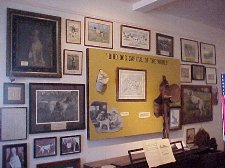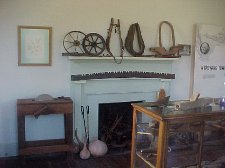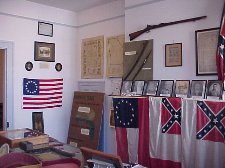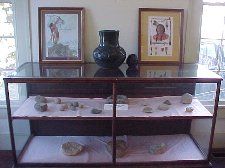 Traveling Across Georgia |
Burke County Museum
Home >>
USA Home Page >>
Georgia Home Page >>
Georgia Attractions |
About Us | ||||||
|
Alabama Alaska Arizona Arkansas California Colorado Connecticut DC Delaware Florida Georgia Hawaii Idaho Illinois Indiana Iowa Kansas Kentucky Louisiana Maine Maryland Massachusetts Michigan Minnesota Mississippi Missouri Montana Nebraska Nevada New Hampshire New Jersey New Mexico New York North Carolina North Dakota Ohio Oklahoma Oregon Pennsylvania Rhode Island South Carolina South Dakota Tennessee Texas Utah Vermont Virginia Washington West Virginia Wisconsin Wyoming |
Location of the Burke County Museum Burke County Museum Step back in time the moment you enter the door, for the Burke County Museum is itself a part of history. The one time residence was built about 1858 and for many years was known as the Roberts home. It retains the distinctive architecture of its period (Georgian Cottage), thanks largely to renovation efforts accomplished in 1970 under the auspices of the Georgia Historical Commission. During its 145+ year history, the structure served as a doctor’s office annex and a millinery shop before the present interpretive museum was established.Under the museum roof, discover Burke County’s long and interesting story. Georgia’s second largest county with 832 square miles, Burke County lies within the Coastal Plain geologic province.A chief characteristic of the area is the presence of rocks and sediments deposited when the ocean covered the southern half of the state during the Cretaceous and Tertiary areas.These sediments of sand, clay and limestone were deposited in a relatively continuous sequence on the ocean floor, in layers 500 to 1,000 feet thick. They contain abundant fossils, including the largest oyster known—the Crassostrea gigantissima, which grew to a length of two feet. Indian traders discovered the land that was to become Burke County in the early 18th century. George Galphin, the most widely known of these early businessmen, had two trading posts in the area in the mid-1700’s. One, on the South Carolina side of the Savannah River, was known as Silver Bluff. The other, on the Ogeechee River west of present-day Burke County, was Galphinton. When James Oglethorpe established Georgia as a proprietary colony in 1732, the area now known as Burke County was named Halifax District. Georgia became a crown colony in 1752 and subsequently, in 1758, Halifax District was changed to St. George’s Parish.Settlers in search of new homes found their way to the area. New Gottingen, the first white settlement in this section, was established about 1751 by German Salzburger families. Located near Burton’s Ferry in present day Screven County, the settlement was apparently abandoned about 1758.After the Creek, Cherokee and Catawba Indians relinquished claim to the land in the 1763 Treaty of Augusta, settlers moved in the area in earnest.Many came via waterways from neighboring colonies. Others came directly from Europe. Still other utilized the two major roads built through the area to reach and establish new homes.So, by the time the American Revolution began in 1776, many planters and small independent farmers were well established in the Parish of St. George.Since Georgia was the youngest colony, many of her settlers remained loyal to the king during the Revolution. That certainly was true in St. George’s Parish. In 1774, prominent area residents condemned patriotic acts in Augusta and Savannah, charging that they reflected “improperly upon the King and Parliament of England.” Strong sentiment for and against the king existed. Consequently, great property damage and numerous injuries were reported. The War Between the States forever changed the plantation way of life in Burke County, Georgia and the rest of the South. Numerous young
men died, Sherman’s soldiers in their “March to the Sea” left their mark upon the land, and the economy was disrupted. Although many
plantations did not survive Reconstruction, the area economy remained dependent upon cotton and corn. Tenants and sharecroppers now supplied
the labor. The big plantations were replaced by farms and the 20th century brought farming as big business in Burke. This time, farmers
depended upon machinery, not hand labor. Multiple row cultivators and mechanical cotton pickers replaced countless workers and sent to the
cities to look for jobs. Many found work in Waynesboro. Manufacturing firms and numerous agribusinesses soon employed more of Burke’s
people than farming required.
|
| ||||||
|
Pictures and information were provided by the Burke County Museum | ||||||||
|
Georgia Home Page |
Georgia Attractions |
Georgia Beaches |
Georgia Cities |
Georgia Fishing | ||||||||





